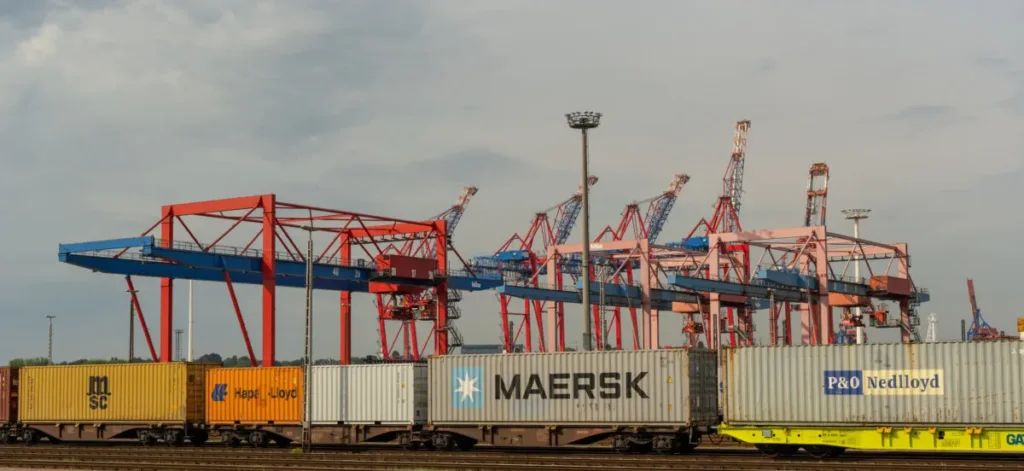Measuring around 400 metres in length, the Wilhelmshaven Express can carry up to 23,660 standard containers (TEU) and is equipped with a low-emission dual-fuel engine. The ship was officially christened at JadeWeserPort in Wilhelmshaven, marking an important milestone in Hapag-Lloyd’s fleet strategy. Built at the Hanwha Ocean shipyard in South Korea, it forms part of a wider investment programme worth approximately two billion US dollars.
The Wilhelmshaven Express will be deployed on the NE1 service operated under the Gemini Cooperation between Asia and Northern Europe. This strategic partnership between Maersk and Hapag-Lloyd is based on a hub-and-spoke model: instead of calling directly at numerous smaller ports, the mega carriers focus on major transshipment hubs, from which containers are distributed via feeder vessels.

Source: Hapag Lloyd
Wilhelmshaven as a central transshipment hub
For Hapag-Lloyd, Wilhelmshaven has become a strategically important location. As Germany’s only deep-water port, JadeWeserPort can handle ultra-large container vessels without being affected by tidal conditions.
“Wilhelmshaven is a central hub for Hapag-Lloyd and the Gemini Cooperation,” said CEO Rolf Habben Jansen during the naming ceremony.
Both the port’s operators and the Lower Saxony state government view the regular calls of the Hamburg Express class as a breakthrough for the region. According to State Premier Olaf Lies (SPD), JadeWeserPort is now on a clear growth trajectory:
“We fought hard and negotiated with every shipping company – the breakthrough has come with Hapag-Lloyd.”
Focus on sustainability and efficiency
The Wilhelmshaven Express and its eleven sister ships are not only the largest in Hapag-Lloyd’s fleet but also set new standards for efficiency. Their dual-fuel engines can run on both LNG and biomethane, reducing CO₂ emissions by up to 25%.
Looking ahead, Hapag-Lloyd plans to continue modernising its fleet. By 2029, a further 24 newbuilds with capacities ranging from 9,200 to 16,800 TEU are scheduled for delivery, all featuring the latest low-emission technologies.
Future prospects for JadeWeserPort
Ten of the twelve Hamburg Express vessels now make regular calls at Wilhelmshaven. The port recently surpassed the one-million-TEU mark in annual throughput for the first time, while its total capacity stands at around four million TEU – leaving significant room for expansion.
Holger Banik, Managing Director of the port infrastructure company NPorts, is confident about future growth:
“One attracts the other. Wilhelmshaven will continue to grow in the coming years.”
Negotiations with additional shipping lines are already underway, meaning that these XXL vessels are likely to become an increasingly common sight along Germany’s North Sea coast.









